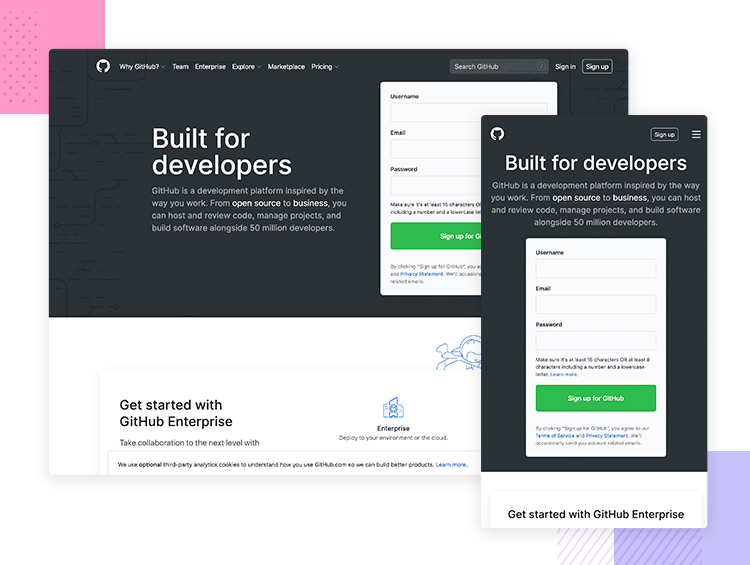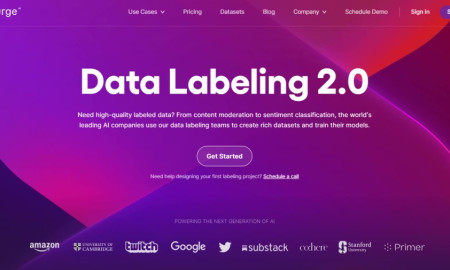
Do you want to learn front-end developer skills online? There are many options, including Pluralsight, Linkedin Learning, and Odin Project courses. We will discuss the benefits of each course and what you can expect. We'll also share the best resources for you to complete the course. These courses can be a great place for people with no prior experience. These courses will cover the basics and use of React, an Open-Source Javascript library to teach web development.
Linkedin Learning
It is possible that you have decided that you would like to take an online course in LinkedIn Learning front end development. The new platform provides more than 600 classes in coding across many topics. Learning Paths are collections of videos on one topic that are broken down into courses. Although you might find it difficult to follow the progress of a particular course, you can still choose which ones to watch.

Pluralsight
Online Pluralsight courses are a great option if you want to learn front end web design and get started in the industry. These courses cover intermediate to advanced skills and are divided into Paths. Paths combine a number of courses and tools to teach specific skills in a logical order. The paths range from Web Development and IT Ops to Creative and Security. Certification practice exams are available for some courses to show your skills.
Odin Project
The Odin Project front-end developer course is an online resource that will help you learn how to be a front-end developer. The program provides industry-recognized lessons about front end development. These classes let you learn by doing. You'll be able to apply what you've learned, and also build a portfolio. The lessons are backed up by interactive, hands-on projects, allowing you to master your new skills faster.
Odin Project's front end developer course online is completely free
The Odin Project offers a free online course on front-end programming. The full-stack curriculum of the open-source project, which includes everything HTML, CSS, JavaScript and Ruby programming, is what makes it a popular open-source source project. The course also includes reference materials, such as Bulma CSS. It has a large online community, making it easy to ask questions or learn at your own speed.

Besant Technologies
Besant Technologies provides an online course in front-end development that provides a thorough understanding of web technology. It covers HTML, CSS and JavaScript. The course also covers Angular. Students who successfully complete the course will receive a certificate which proves their industry readiness. The course is affordable. You can attend either a part-time, or full-time course depending upon your interest and time.
FAQ
What Websites should I make?
This depends on your goals. Your website should be able to sell products online. This will allow you to build a successful business. To do this, you will need to create a strong eCommerce website.
Blogs, portfolios, forums, and other types of websites are also popular. Each one of these websites requires different skills. For example, to set up a website, you need to understand blogging platforms such WordPress or Blogger.
You must decide how to personalize your site's appearance when choosing a platform. There are many templates and themes available that can be used for free on each platform.
Once you have selected a platform you can add content to your website. Images, videos, text, and other media can all be added to your pages.
Once you're ready to publish your website online, click here. Visitors can access your website in their browsers once it is published.
Is WordPress a CMS?
Yes. It is a Content Management System (CMS). Instead of using Dreamweaver or Frontpage, a CMS lets you manage your website content directly from your web browser.
WordPress is completely free! Other than hosting, which you usually get from your ISP.
WordPress was initially intended to be used as a blog platform. Now, WordPress offers many different options: eCommerce sites, forums. Membership websites. Portfolios.
WordPress is very easy to set up and install. Download the file from their website, and then upload it to your server. Next, simply go to your domain name via your web browser and log into your new site.
After installing WordPress, register for a username/password. Once you log in, you will be able to access your settings from a dashboard.
From this page, you can add images, pages, posts, menus or widgets to your website. You may skip this step if you feel comfortable editing and creating content.
If you prefer to work with a professional web designer, you can hire them to manage the entire process.
Do I require technical skills to design or build my website?
No. All you need to understand HTML and CSS. Online tutorials can be found that cover both HTML and CSS.
Statistics
- Is your web design optimized for mobile? Over 50% of internet users browse websites using a mobile device. (wix.com)
- Studies show that 77% of satisfied customers will recommend your business or service to a friend after having a positive experience. (wix.com)
- At this point, it's important to note that just because a web trend is current, it doesn't mean it's necessarily right for you.48% of people cite design as the most important factor of a website, (websitebuilderexpert.com)
- It's estimated that in 2022, over 2.14 billion people will purchase goods and services online. (wix.com)
- It's estimated that chatbots could reduce this by 30%. Gone are the days when chatbots were mere gimmicks – now, they're becoming ever more essential to customer-facing services. (websitebuilderexpert.com)
External Links
How To
What is Website Hosting?
Website hosting is the location where people go when they visit websites. There are two types.
-
Shared hosting is the cheapest. Your website files reside in a server managed by another company. Customers visit your website and send their requests over the Internet to this server. The request is sent to the server's owner who then passes it on to you.
-
Dedicated hosting – This is the most expensive option. Your website is hosted entirely on one server. You and your traffic are protected by the fact that no other websites share server space.
Because shared hosting is more affordable than dedicated hosting, most businesses opt for it. When you use shared hosting, the company that hosts the server gives you the resources to run your site.
There are pros and disadvantages to each option. These are the key differences between them.
Pros of Shared Hosting
-
Lower Cost
-
Simple to Setup
-
Regular Updates
-
It can Be Found On Many Web Hosting Companies
Shared hosting is often as cheap as $10 per month. Keep in mind, however, that bandwidth is usually included in the price. Bandwidth is how much data you can transfer to the Internet. Even if you are only uploading photos to your blog site, high data transfer rates can still cost you extra.
You will quickly see why you paid so much for your former host once you have started. Most shared hosts have very poor customer support. You'll be on your way after they walk you through setting it up.
You'll want to look into a provider that offers 24-hour phone support. They will assist you with any problems that may arise while you're sleeping.
Cons of dedicated hosting
-
More Expensive
-
Less common
-
Requires special skills
With dedicated hosting, you get everything you need to run your website. You won't worry about how much bandwidth you are using or how much RAM (random Access Memory) you have.
This means that you'll spend a bit more upfront. But once your online business starts, you'll realize you don't need any technical assistance. You'll become an expert at managing your servers.
So Which Is Better For My Business?
The answer depends on what kind of website you want to create. Shared hosting might be best if you just want to sell products. It is simple to set up and easy to maintain. And since you're sharing a server with many other sites, you'll likely receive frequent updates.
If you are looking to create a community around your brand, dedicated hosting is the best option. You can focus on building your brand without worrying about handling your traffic.
If you're looking for a web host that offers both options, we recommend Bluehost.com. They offer unlimited monthly data transfers, 24/7 support, free domain name registration, and a 30-day money-back guarantee.